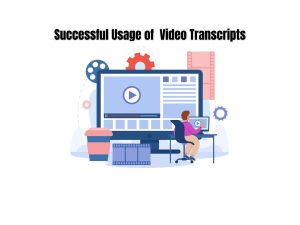
Case Studies: Successful Usage of Video Scripts
In the digital age, video content has become an integral part of online communication strategies for businesses and organizations across various industries. While videos are
Meta descriptions – short pieces of text that describe the content of a webpage – might not directly impact your website’s ranking in search engines, but when written effectively, they can contribute significantly to your SEO strategy. This blog post offers a deep dive into the art of crafting compelling meta descriptions that enhance Click-Through Rates (CTR) and promote user engagement.
While Google has confirmed that meta descriptions do not factor into a page’s ranking algorithm. They still hold immense importance in SEO for the following reasons:
Increases CTR: A well-written meta description gives users a quick insight. Into what the page is about, compelling them to click and read more.
Improves User Experience: Providing concise, relevant summaries about your webpages improves the overall user experience. Contributing to a longer dwell time and lower bounce rate.
Promotes Your Brand: Meta descriptions can be a powerful platform to communicate your brand’s value proposition. And to intrigue users to explore your site.
Now, let’s delve into how to craft magnetic meta descriptions.
Google truncates meta descriptions after approximately 160 characters on desktop and 120 characters on mobile. Hence, it’s crucial to keep your descriptions within this limit to ensure that users can read them in their entirety.
Each page on your website serves a unique purpose, and the meta descriptions should reflect that. Duplicate meta descriptions can lead to confusion for users and give a sense of redundancy, which can hinder the click-through rate.
Including keywords in meta description can prompt search engines to bold these terms in the results, making your webpage stand out. However, remember that meta description should be written for users first, and search engines second.
The primary function of a meta description is to help potential visitors understand what they will gain from visiting your page. So, write it from a user’s perspective, focusing on the benefits or value the page will bring.
Use active voice and incorporate a compelling call-to-action (CTA) to encourage users to click on your page. Be direct about what you want them to do next, whether it’s reading a blog post, exploring a product, or learning more about your services.
A key measure of a good meta description is how accurately it describes the content on the page. Misleading meta description can lead to higher bounce rates, as users exit quickly if content doesn’t meet their expectations.
Incorporating power words – terms that trigger an emotional or psychological response – can elevate your meta description. Words like ‘Discover’, ‘Unleash’, ‘Boost’, ‘Revolutionize’, can infuse energy and increase CTR.
Creating compelling meta description is an art that requires a balance of marketing savvy, SEO knowledge, and a deep understanding of your target audience. By combining these elements with the strategies laid out in this blog post, you can craft effective meta description that drive traffic and engagement, enhancing your overall SEO proposition. Remember, meta description are the bridge between the search results and your website – make sure you’re inviting users to cross over!

In the digital age, video content has become an integral part of online communication strategies for businesses and organizations across various industries. While videos are

Duplicate content refers to identical or similar content that appears on multiple URLs within a website or across different websites. While duplicate content is common





“LeadsView did an excellent job with my project and will definitely recommend. Easy to work with, flexible and good quality of work. I am more than happy to recommend them."




















Copyright 2023 © LeadsView. All Rights Reserved
